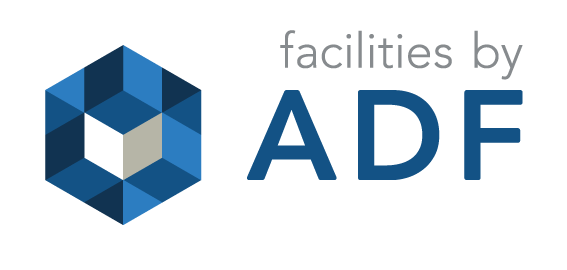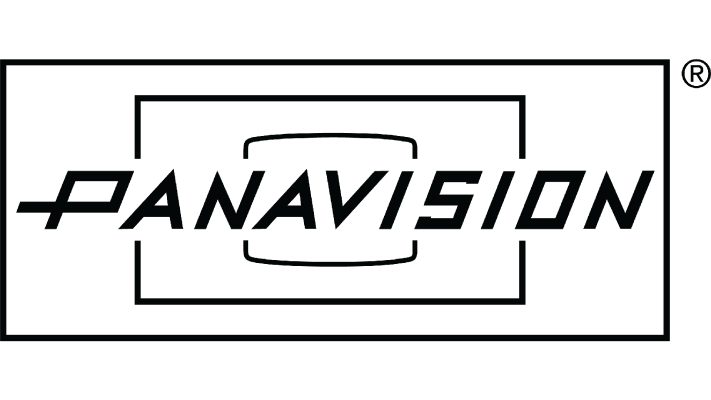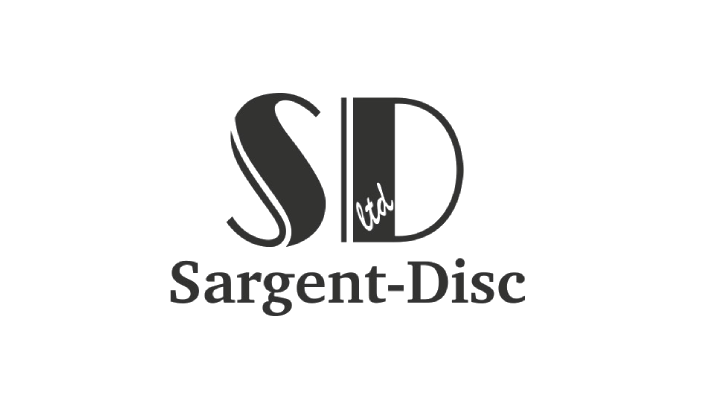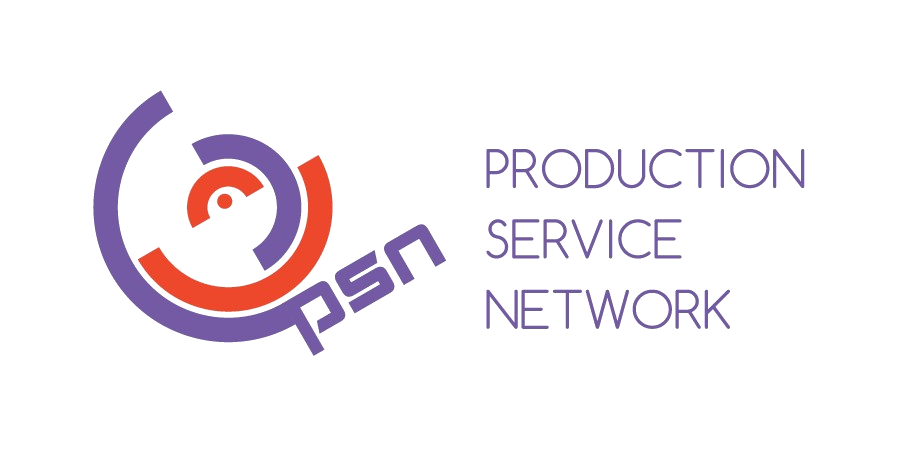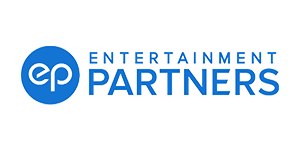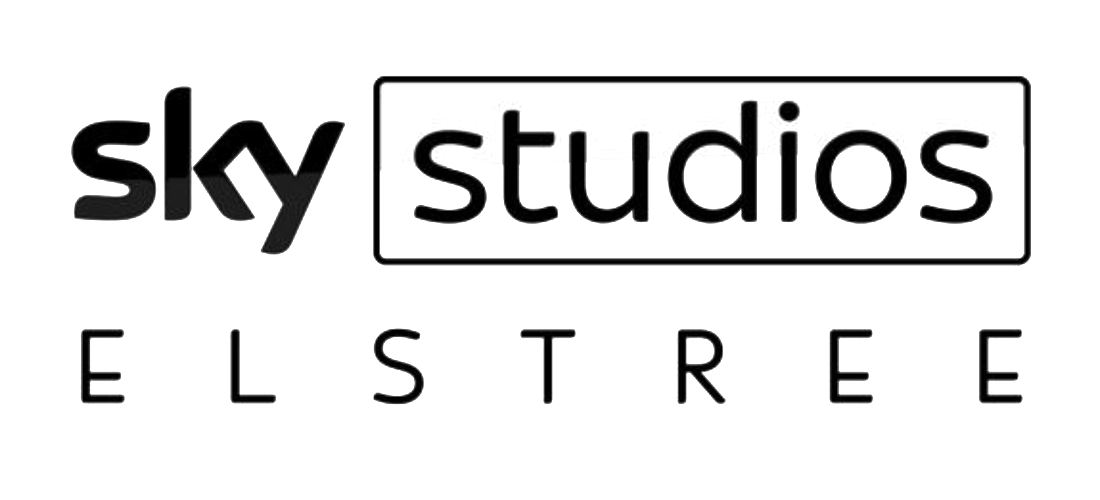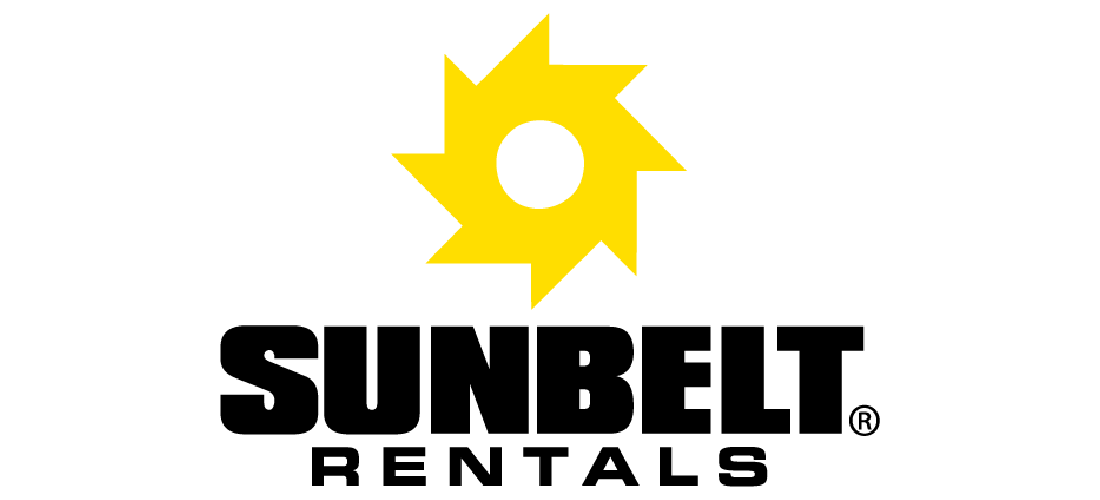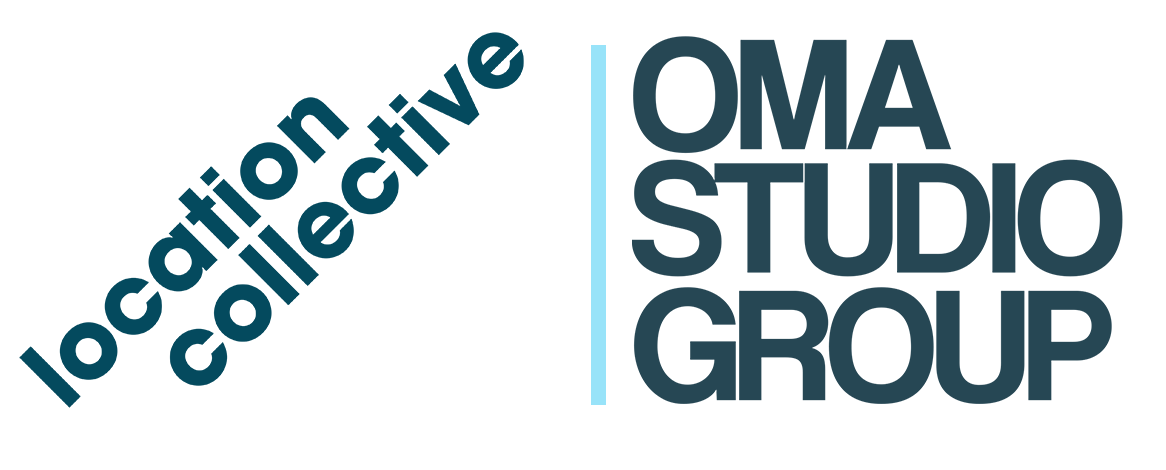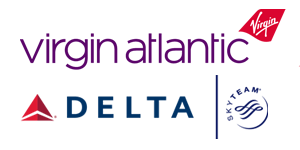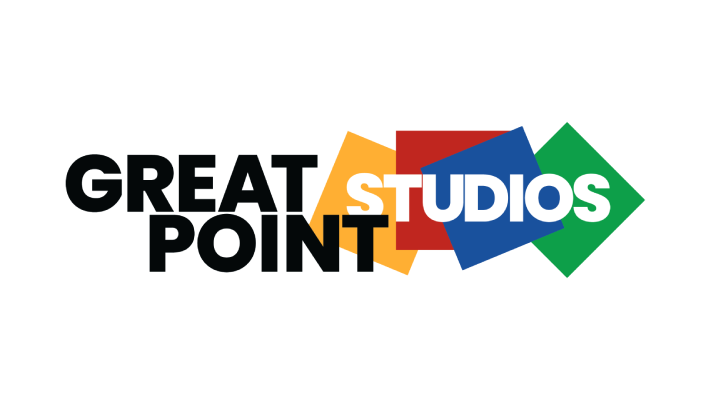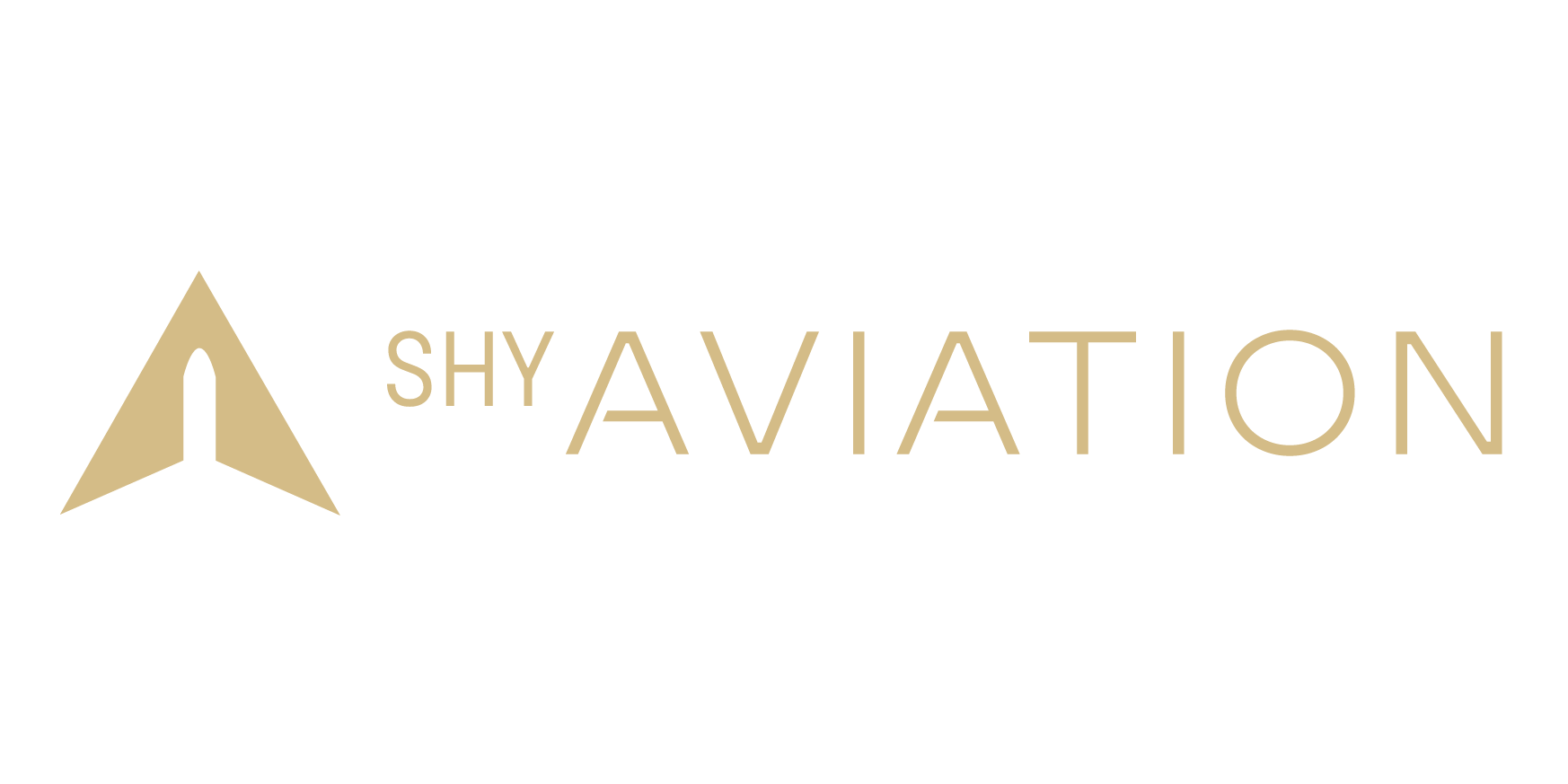Accruals or Cash Accounting?
Accruals accounting and cash accounting are two methods of tracking income and expenditure in accounts. Cash accounting recognises transactions only when there is an exchange of cash, therefore income is recorded only when cash is received, and expenditure is recorded only when cash is paid.
Accruals accounting records income when it is earned and records expenditure when it is incurred.
The principle is to measure the performance and position of a company at any point in time, by recognising economic events regardless of when cash transactions occur.
Productions generally use a variation between the two methods. Petty cash expenses and income are usually recorded on a cash accounting basis and expenditure is usually recorded when it is committed, e.g. by recording a purchase order when it is written. This method provides an accurate picture of the production’s current position against their budget at any point in time.
However, it is important to recognise that recording expenditure when it is committed is different to recording it when it is incurred.
For example, in January a purchase order is raised for the hire of a crane in February, and it will be paid on 30 day terms in March.
A production accountant should record the expenditure in January when the amount is committed.
Accruals accounting requires the amount to be recorded in February when the crane is used, and therefore the expenditure is incurred.
Cash accounting will record the amount in March when it is paid.
Accruals accounting is the standard accounting practice for UK companies, with the possible exception of very small operations. The accountants for the production company may therefore require an adjustment to the accruals when preparing the year end accounts for the company.
Production accounting best practice is to record any income or expenditure as soon as it is committed. In essence what this system requires to work effectively is for purchase invoices to be processed in a systematic and efficient manner. All purchase orders should be put on the system when they are written. In addition all purchase invoices should also be put on the system and then matched and checked to the purchase order with any queries or disputes made after that point. A later credit note is then the proper way of reducing the total where there are discrepancies.
Likewise, all sales invoices raised should be processed on the accounting system swiftly. These invoices should also be processed through the accounts receivable module of the accounts package (if available) so that the age of these debtors can be properly checked and chased. A common error made by some Production Accountants is to wait until the money has been received before processing the invoice. This is done in order to minimise any VAT repayment that may be due but is incorrect and could lead to a penalty unless a vat cash election is in place.
Accounts Receivable
Sales Invoicing – Production Financing
The Producers will advise the Production Accountant what sources of funding are, or will be, in place and what the individual financing contracts specify in terms of payments to be received and the dates on which they fall due. Unless normal company procedures state otherwise, the accounts department should then raise sales invoices covering those payments and dates. The invoices should be checked and reviewed by a more senior third party. It should be ensured that they are received, and confirmed, by the funding source in time for them to be processed, and paid, by the relevant contract date. If that date is not met, senior management should be advised immediately as it may have a detrimental effect on cash flow.
The sales invoices should clearly indicate:
Customer name (funding party), full address and contact details (if appropriate).
A description of funding and reference to the contractual due date for payment.
Purchase order number if provided by the funder.
Invoice date, invoice number and VAT number where applicable. Generally VAT, at the standard rate, will apply if invoicing UK to UK. However, if funding is from a non-UK source refer to section on Taxation ‘Sales from a UK company to a company abroad’ or alternatively consult HMRC for advice.
The sales invoice should also carry the company registration number of the production company and its registered address, both of which can be obtained from Companies House.
It is the responsibility of the Production Accountant to chase debtors and to make sure that the funds on the cashflow schedule are paid in on time.
Sales invoicing – miscellaneous other
If other sales invoices need to be issued (see section on Production Assets) they should take the same format as above apart from a change to the description line.
Where the accounting software is able to raise sales invoices then the appropriate entries will have been processed automatically as the invoice is raised. If this is not the case, a sales invoice must be manually posted onto the accounting system.
Accounts Payable
Initial ordering process
Ideally, all incoming invoices from suppliers should tie up with supporting documentation previously received by the accounts department with provision for the expense already entered into the system and allowed for in the cost report. The documentation may exist in several different formats (e.g. letters of agreement, internal memos, transport requests etc) but in the majority of cases purchase orders (PO) will apply.
Responsibility for raising purchase orders may vary from one company to another but, in general, it should specify:
Supplier name, address and contact details.
Detailed description of the items being purchased or, when applicable, rented.
The agreed price net of VAT.
If a rental, the individual value of the items being hired (particularly relevant for prop/costume requirements), the hire period, the agreed rental price net of VAT and any additional terms and conditions of hire that may apply (e.g. deposits etc).
The PO’s should be approved by the Head of Department, where relevant, seen by the Production Accountant (so that the appropriate cost code can be confirmed) and authorised by the Line Producer/Production Manager before it is released to the supplier. Usually productions will use online digital purchase orders systems.
Where substantial cost is involved, and more than one supplier has been asked to submit quotes, there should be records on file confirming that an appropriate process has been followed and that the most competitive bid has been selected before the PO is issued.
Invoice processing
When an invoice arrives it should be checked for validity (VAT numbers etc) then matched up with the prior supporting documentation and, if the amounts agree and the invoice is in order, it should be posted into the accounting system. If no supporting documentation exists the invoice should be entered but back-up should be sought before submitting the invoice for approval. Where appropriate, confirmation that the goods have arrived (delivery notes etc), or services provided, should be obtained and the invoice plus backup approved by the relevant Head of Department, the Production Accountant and the Line Producer/Production Manager. The approval process is often a digital process, using software like Docusign or Adobe Pro.
If an invoice includes VAT but does not show the supplier’s VAT number, then VAT cannot be reclaimed on the invoice and the production accountant should therefore not pay the VAT element of the invoice until a valid VAT number is supplied.
If an invoice covers only a part of the expense commitment on a PO it should be posted into the system and the PO provision reduced by the proportionate amount so that the cost factor remains unchanged. The invoice can then be processed as per above. If the invoice exceeds the PO expense commitment (e.g. additional items, hire overruns etc) reasons for the difference need to be documented, and if appropriate, the cost factor adjusted before the ‘signing off’ process continues.
No invoice should be paid until all the approval procedures have been completed
A proforma invoice is a temporary document used by some businesses to save having to pay VAT over to HMRC before the client has paid them the VAT. A proforma invoice is not a valid invoice for VAT purposes and VAT cannot be reclaimed on a proforma invoice. Generally a supplier will issue a VAT invoice when the proforma invoice is paid. A production accountant should claim the VAT back using the date of the full invoice as the tax point rather than the date of the proforma invoice or the date of payment of the proforma invoice.
Bank Accounts
Initial considerations
Should the production have its own dedicated bank account?
The decision as to what bank accounts are required is generally governed by the policy of the company concerned. Large productions will almost certainly require a separate bank account but it is sometimes sensible for a company with several small projects in development to put all developments through one designated development bank account, only opening a designated production bank account when the programme is commissioned.
What accounts are required?
For most UK independent productions a recommended structure would be:
- Sterling current and deposit accounts in the name of the production company. By arrangement with the bank you should be able to ensure that the current Account balance ‘zeros out’ at daily close of business and transfers into the deposit account so that some interest can be earned when the bank is closed. They will make a charge for this service.
- A foreign currency account (if relevant). This will certainly be required if you have an overseas location shoot but could also prove to be of use if you are receiving funding in US$, Euros etc, and have to make payments in those currencies, as you can avoid conversion costs on both incoming and outgoing transfers.
- Trust account. Some funders require that production bank accounts are set up as ‘trust accounts’ which operate under a special mandate that the large banks have pre-approved. These accounts operate in a similar way to a normal bank account but the trust account funds are held in trust for the funder and if they wish to, the funder is able to take over the operation of the bank account without requiring authority from the production company. Furthermore, in the event of insolvency, trust bank accounts are ring-fenced such that they are not available to creditors but are available only to the funder. If the funder stipulates that a trust account must be used, the Production Accountant will need to obtain the mandate from the funder and will need to ensure the mandate is signed by both the funder and the production company before the bank account can be set up. It is not generally possible to open a normal bank account and then change that bank account into a trust account. Furthermore, trust accounts’ title should carry the name of the production company, the name of the company whose funds are in trust and must also indicate that the bank account is a trust account.
e.g. ABC Limited receive a commission from Sky TV for a production called ‘Dogs’ and Sky require that the production is operated through a trust account then the name of the bank account should be ‘ABC Limited ‘Dogs’ Sky Trust Account’.
Who should be able to approve payments?
Large scale operations have well defined controls over payments and the Production Accountant has to operate within the requirements of such organisations. For independent productions, best accounting practice requires that payments can only be made from a bank account when approved by at least two authorised signatories. Furthermore, no-one should authorise a payment to themselves; such payments should be authorised by the other bank signatories.
Funders and production companies may also require specific people to authorise payments in excess of certain limits and the Production Accountant needs to ascertain what the requirements are for his/her production.
Best practice would also generally require that the Production Accountant and Line Producer are not able to make a payment without it being approved by the Producer or a Director of the company. This division of authority is usually achieved by specifying in the bank mandate that the Line Producer or the Production Accountant can sign and that the counter signatory then has to be the Producer or a Company Director.
The Production Accountant also needs to consider what controls should operate over online payments. Banks have online approval systems, and you can request that it requires two separate people with different passwords to enter/approve online payments but where this is not the case, best accounting practice would require that the Production Accountant has to ensure at least two authorised people to sign off a list of the payments that the Production Accountant is intending to make online.
Account signatories
An example of account signatories control might be as follows:
Each payment requires a minimum of two approvers on every outgoing payment, either one each from lists A & B or two from list A
Signatory list A: Producer, Line Producer, Production Manager, Production Company Director
Signatory list B: Financial Controller, Production Accountant, Assistant Production Accountant.
However, individual companies may have different requirements.
Account operating
When presenting BACS/wire transfers etc for payment approval and signature, the Production Accountant should ensure that all supporting documentation is duly checked, authorised, and attached.
Allocated passwords that have been agreed with the bank for validation of payments should be kept secure and separate from any other bank documentation on file.
Bank reconciliations
Every production bank account must be regularly reconciled to the accounting records (at least weekly but on larger productions a daily reconciliation may be necessary). The minimum requirement is that bank reconciliations are produced to support every cost report. All differences, no matter how small, must be investigated and resolved. A 10p difference on the bank account might be made up of one item of £100,000 and another of -£100,000.10!
The reconciliation should start with the bank statement balance and then adjust/deduct uncleared items to agree back to the figure on the Trial Balance. Ideally this should be done by a member of the accounting department and then checked and signed off by the Production Accountant.
All banking transactions, both receipts and payments, should be recorded under the Bank section of the Production Accounting system as soon as they are processed. If the payment system is computerised this will happen automatically but there will be instances where transactions may require manual input (e.g. incoming funding, direct debits, bank charges etc), and these should be journaled into the system as soon as they are identified.
On larger productions it would be useful to download statements on a daily basis so that they can be checked and any differences, or items requiring manual input, be attended to. This saves time when the full reconciliation is due.
The bank reconciliation should always be prepared by one person and signed off by a second party.
When the bank reconciliation is prepared, it should be reviewed for old outstanding un-cleared items. There can be a delay between debit card payments showing on the bank statement and being recorded in the accounting system.
Bank account controls top tips
- Segregation of duties always maintained
- Two authorisations for online payments
- Supporting documentation for every transaction
- All cash payments signed received by the recipient
- Evidence of authorisation on all documentation
- Two people to collect cash from the bank
- Additional floats issued only after previous floats are cleared
Petty Cash and Floats
Expenses and Floats
Most productions in the UK are now cashless, with floats and expenses paid directly to crew members’ bank accounts. However, some overseas shoots may still require substantial amounts of cash to be used.
Petty Cash
1) Insurance policy
What is the production insurance policy limit for the amount of cash that can be kept in the company premises and does the policy also require that the money is kept in a safe? Safes are given a rating specifying the maximum value of cash to be held in the safe. The Production Accountant must ensure that the rating meets the insurance policy requirement.
2) Expense vouchers on spreadsheets
Have production personnel been issued with a standard excel spreadsheet that they are required to account for expenses on? If so, personnel should be instructed to submit an e-mailed version of the spreadsheet, and copies of the receipts. The Production Accountant can then adjust VAT and other errors directly on the spreadsheet and then upload the form into the accounts system.
3) Control of the safe
What is company policy concerning the number of people with keys to the safe? Best practice requires that one person alone should be authorised to access the safe and that one spare key should be kept off the premises in case the other key is lost. The first key should be in possession of the authorised key-holder at all times and must not be left on the premises overnight.
The second key holder should be a senior person in the company and best practice requires that this is not the Line Producer. The person authorised to access the safe should be made aware that they alone are responsible for the integrity of the safe and its’ contents.
4) Cash collection
When picking up cash from a bank, what is the company policy on the number of people who have to attend? Many companies, for example, insist on at least two people going to the bank when more than £1000 is being drawn. It is also worth considering whether it may be preferable to arrange for the cash to be delivered by a security firm. This service reduces the risk of robbery and nowadays is quite cost effective.
5) Petty cash vouchers
The Production Accountant should determine what form of petty cash vouchers (PCV) would prove to be most suitable. The PCV should provide sufficient space for detailed descriptions, room to insert cost codes and separate columns for net/VAT/gross spend. The appendix to this guide has an example of a template; this version can also be used on Excel, and the VAT calculated automatically.
6) Cash reconciliations
Cash in hand should regularly be reconciled to the accounting records to ensure that they agree. One person should prepare the reconciliation and another person should sign it off. A cash reconciliation should occur at least weekly but on large productions a daily reconciliation may be appropriate.
Blank petty cash and float rec.xls
7) Taxable Expenditure
The Production Accountant must also consider whether any of the expenditure is actually taxable. For example, if a runner was paid in cash for their per diems, this may need to be subjected to PAYE/NI deductions and shown on the payroll. Similarly, mileage allowances in excess of the Inland Revenue approved sums are taxable.
8) Production assets
It is also important that the Production Accountant identifies production assets accounted for through petty cash. Such assets (costumes, props, fridges, computers, chairs) do have a value and should be either sold off at the end of the production or returned to the production company. Where an asset is sold off at the end of the production VAT must be accounted for on the sale, if the company is VAT registered.
Other sample documents
Journal entry form example.xls
Remittance advice.doc
Control over floats
There is probably more fraud committed with expenses and floats than any other area of production so the following controls are necessary:-
1) Issuing floats
When a float is advanced the Line Producer must authorise the float advance sheet and the recipient of the float must also sign the document to acknowledge that they have received the float and are responsible for accounting for it. The Production Accountant must keep a copy of the float advance sheet and should give a copy of it to the recipient. The Line Producer may also require a copy so that they are aware of the float (and can therefore make allowance for the potential cost as the float is spent). When a float is accounted for, the Line Producer should sign that document off.
An example of a float form can be found in the appendix.
2) Policy on unaccounted-for floats
Many production companies set limits as to the level of individual float advances and once that limit is reached, a person has to clear down the unaccounted-for float (by providing an analysis of expenditure and supporting receipts) before another float can be advanced.
3) Imprest system
Another system that may be employed is called the ‘imprest’ system in which a person’s float is always kept at a certain pre-agreed level.
e.g. Where a float of £100 is issued, if receipts for £90 are submitted, then an amount of £90 will be reimbursed to the float holder to bring the balance of the float back to £100. The replenishment is credited to the float account and the debits will go to the respective expense accounts, based on the petty cash receipts.
It is important that the Line Producer signs off the further advance of £90 demonstrating that they are aware of the expenditure and can make provision for the cost in the cost monitor.
4) Accounting for floats
Best practice generally requires the Production Accountant to have a separate account in the balance sheet for each person having a float. Where floats are paid in cash (ie, on some overseas shoots), there will need to be a ‘cash in hand’ account which reflects monies drawn from the bank but not yet advanced to anyone (this money should be in the company safe) and when some of this money is advanced to a member of the production team, entries need to be put through to the accounting records to reflect the transfer of money from the ‘cash in hand’ to that individual’s float account. The Production Accountant should frequently agree the levels of individuals’ floats with them so that no misunderstandings occur.
5) Float holders’ responsibility
When an individual is given a float advance, that person must be made aware that they alone are responsible for accounting for the float. Very often a Head of Department who receives the float will advance part of it to one of the team working under them but this does not absolve them of their responsibility to account for that part of the float. The Head of Department must require the person to account for the float to him/her and the costs relating to the sub-float will then be incorporated into the HOD’s float and accounted for therewith. Ideally it would be preferable for the accounts department to issue a separate float directly to the team member instead.
6) Accruing for floats
When cost reporting, it is important to put monies aside in the relevant cost centre for the costs associated with floats. For example, if the art department has £40,000 of float advances, you would generally put £40,000 in costs to complete (or committed costs) to reflect this likely cost. Some Production Accountants like to raise a purchase order for floats to ensure that monies are put aside to reflect the costs to come when the float is accounted for.
7) Controls over clearing of floats
It is generally good practice for a production company to infer that final weeks’ wages will be with-held until individuals have accounted for their floats. A person with a float of £500 can then expect the final £500 due to them (net of tax) to be withheld until the float is accounted for.
8) Supporting documentation
All expenses must to supported by documentation (wherever possible by a VAT receipt; VAT cannot be claimed on a credit card slip). Where it is impossible to obtain the documentation, the individual accounting for the float should write ‘no receipt’ on the expense form and the Line Producer should initial this item by way of authorisation
9) Authorisation of floats
The Line Producer’s floats should be authorised by someone senior to them in the company
10) Write offs
Best practice should ensure that all floats are accounted for but, in the event that it is necessary to write off a float (it happens!) this must be approved by the Line Producer or, if the write off is in the Line Producer’s float, the write off must be approved by someone senior to them in the company or Production Company.
Production Accountant responsibilities
Check that any per diem, meal or travel allowances paid in excess of HMRC approved limits are taxed where necessary. This will generally only apply to U.K resident location and it would be sensible to obtain HMRC ruling on proposed payments beforehand.
A separate record should be kept for each individual who is likely to run up excessive mileage (e.g. Buyer, Location Manager) to ensure that the allowance changes in accordance with HMRC guidelines and a tax liability is avoided.
Check that any purchased items qualifying as assets are flagged as such and are entered in the register (See Production Assets section).
Ensure that cash in hand is reconciled to the accounting records on a regular basis, at least once a week on a small production but more frequently on a larger one. It should be prepared by the Assistant Production Accountant and then checked and signed off by the Production Accountant. Where there is no assistant, the Production Accountant will prepare the reconciliation, and it should be signed off by someone more senior.
Filing
It is important to keep records for future reference and also as back up for audit purposes. There should be a systematic approach to filing documents which will allow easy retrieval of information.
Most production offices now work paperlessly and use electronic filing systems. So clear processes must be communicated for moving documents between folders and the naming conventions of the documents.
Where paper files are still used, here is a recommended list of files.
(Alpha = filing paperwork in alphabetical order; Numerical = filing paperwork in numerical order; Date = filing paperwork in date order)
- Expenses – numerical
- Floats – alpha
- Purchase Orders – numerical
- Unmatched Purchase Orders – alpha
- Unmatched Invoices – alpha
- Unpaid Invoices – alpha
- Paid Invoices – alpha
- Cheque/Bank Transfer Remittances – numerical
- Sales / Income – numerical
- Bank Account – for mandate, correspondence, statements,
- Bank and PCard Reconciliations – date
- Payslips – alpha
- Crowd Time Sheets – date
- Payroll Start Forms for cast and crew – alpha
Other files for production finance office
- Scripts
- Schedule
- Day Out Of Days (DOOD)
- Call Sheets
- Progress Reports
- HOD Statements
- Insurance
- Contracts (may be kept by Production Co-Ordinator)
- Funding
- Cost Reports
- VAT Returns
Minimum Requirements
The minimum requirements for that must be adhered to in any system are:
- Unique references for all documents
- Evidence of authorisation of expenditure with a clear segregation of duties from the payment
- All documents must be dated
- There must be a clear audit trail
Control of credit / debit cards
Credit Cards
The use of company credit cards must be subject to the strictest control. Generally only one person in a company should be authorised to use the company credit card and anyone in the company who needs to make a payment by credit card should then approach that person if they need to make a credit card payment. The request for a payment to be made on the company credit card should be supported by a signed purchase order and the person requesting the payment should be responsible for providing an invoice to support the transaction.
Upon receipt of the monthly credit card statement, the person authorised to use the credit card should analyse and code all transactions and should attach supporting invoices and purchase orders. The analysis should then be reviewed and signed off by another senior officer of the company before the analysis is posted onto the accounting records.
Larger companies may issue several credit cards to its employees but in such a case, each individual with a credit card must provide a monthly analysis of his/her credit card transaction (supported by invoices) and that analysis must approved by another senior officer of the company.
It goes without saying that credit card pin numbers must be regularly changed and must not be available to anyone other than the person authorised to use the card.
Company credit card template.xls
Debit Cards
There may be debit cards issued to signatories of the production bank account. Ideally these should only be used to make direct payments where other methods of payment are unavailable.
The person authorised to use the debit card should analyse and code all transactions and attach supporting invoices and purchase orders. The analysis should then be reviewed and signed off by another senior officer of the company before the analysis is posted onto the accounting records. It is important that this is submitted on a timely basis to ensure all transactions are recorded to enable weekly bank reconciliations.
Pre-Paid Debit Cards
Most productions set up accounts with pre-paid debit card providers to issue to crew who need floats to purchase disbursements on behalf of the production. They are also known as Pcards or Purchasing cards. The pre-paid debit cards can be issued to authorised production personnel instead of issuing floats or credit cards. It is important that production disbursement expenditure is kept separate from personal costs. These cards can be used for per diems, but where an individual is issued per diems as well as floats for production expenditure, they should be issued with two separate cards, one for each type of expenditure.
The card holder can be sent a list of all the expenditure on the card each week, the card holder should then analyse and code all transactions and attach supporting invoices and purchase orders. The analysis should then be reviewed and signed off by another senior officer of the company before the analysis is posted onto the accounting records. The balance on the card can then be topped up by the value of the expenditure on the sheet. It is important that these cards are regularly reconciled and receipts/back up are received for all expenditure. The accountants department should be chasing for missing receipts on a weekly basis. Any purchases made on the cards that have not been entered into the accounting system must be accrued for in the cost report.
Disbursements are items where ownership transfers to the production, (e.g. props). The VAT can be reclaimed by the production, regardless of the contractual status of the person submitting the expenses.
Personal Expenses (travel, accommodation, meals etc.).
- The production can only reclaim VAT for business expenses that are for an employee.
- The production must keep the original receipts in order to reclaim VAT.
- Where the individual is a VAT registered freelancer, the production cannot reclaim the VAT, but the freelancer can. Therefore, the freelancer must submit an invoice for the net amount, with their VAT charged on top. Then the production can reclaim the VAT from the freelancer’s invoice.
- Where freelancers are on the flat rate VAT scheme, they may be reluctant to invoice for the net amount of the expenses as they may feel they are out of pocket as they cannot reclaim the VAT on these expenses. However, they benefit from the output VAT mark up and cannot therefore expect to be reimbursed for input VAT lost.
Production Assets
What is a Production Asset?
A production asset is any item purchased, or manufactured, during the course of a production which will have a residual value and may be available for sale once no longer required by the production. These will generally be included within expenditure incurred by, but not limited to, the props, sets, costumes, art, production and accounting departments. Agreement should be reached in pre-production for a minimum level of net cost to constitute an asset e.g. a value for a single item of £250 net of VAT or desirable items costing less than this amount. Desirable items are items which have a desirable value (i.e. laptop, satellite navigation system, digital camera, printer, scanner etc). These items should be recorded on a production asset register. Particular attention should be made for the security of these assets.
A production asset is not necessarily the same as a fixed asset. Fixed assets are assets that have a life of longer than one year, so they are capitalised in the balance sheet and the cost of which is spread across its useful economic life. A production asset may be a fixed asset, but it could also be an item which can be written off in the year of purchase, but still has a value to the production and needs monitoring for that reason.
Who is responsible for the assets and for maintaining the register?
Responsibility for the safeguarding and storage of the assets throughout the production period initially rests with the relevant head of department although they may depend on production to ensure that adequate facilities are made available for them to do so. Maintaining the register is a production accounting responsibility.
Recording the asset in the register
When entering the source document (Invoice/Petty Cash Voucher etc) into the cost accounting system in the normal way, be sure that the ‘asseted’ item is clearly detailed and identifiable. This may be done by using a ‘free field’ if the accounting software allows. It is also advisable to keep a spreadsheet record of all asset entries, plus copies of the source documents, in a separate file. An example asset register is provided, however, some production funding organisations and employers will have their own spreadsheet formats that they would expect to be used.
Production asset register.xlsx
Updating the register
All Heads of Department should receive regularly updated individual departmental lists detailing the assets they are responsible for. This ensures that items that have been sold, lost or damaged beyond repair have been properly reported and documented and then removed from the register. These regular updates also provide the opportunity of establishing a value on items that have been manufactured ‘in house’ in order that they can be added to the register if appropriate to do so.
Disposal of assets
Decisions as to what is to be sold, retained, gifted to individuals, donated to charity or transferred to another production should be taken at a senior production management level. They should determine the percentage of the original cost to be applied to items for resale. Where assets are sold, detailed sales invoices/receipts (with VAT at the prevailing rate) must be issued and, with limited exceptions (e.g. auctions etc), and the assets not released until full payment has been received. It is important that, whatever means of disposal apply to individual assets; it should be clearly documented, filed and reflected on the register.
On disposal of assets (whether recorded assets or other production assets) the transaction must be at arm’s length, at open market value and fully recorded on the asset register for audit purposes.
It is the responsibility of the production to make sure any goods supplied to others are safe and comply with relevant safety regulations. Anyone injured by unsafe goods may be able to claim compensation. Some assets may have a health and safety risk and it should be considered whether it is safe to sell/dispose of an asset. See below for general advice on inherent risky assets
- Electrical appliances
The safety of all electrical appliances designed to operate using the mains is controlled by the Electrical Equipment (Safety) Regulations 1994. All second-hand electrical equipment supplied or offered for supply must be safe. These include, for example, electric fires and heaters, electric blankets, hair dryers, cookers, fridges, washing machines, vacuum cleaners, lamps, computers and CD/DVD players. Any electrical equipment must have a Portable Appliance Test by a competent engineer and be accompanied with enough information to be used safely (hazard labels, manufacturer’s instructions etc). - Gas appliances, gas fires and electric heaters
These appliances must meet a wide range of safety requirements before being offered or sold. - Upholstered furniture
Most upholstered furniture (e.g. sofas, chairs, beds, bean bags etc) must comply with the Furniture & Furnishings (Fire) (Safety) Regulations 1988. Items manufactured after 1990 should have a permanent label with the words ‘Carelessness Causes Fire’. Furniture manufactured prior to 1990 is unlikely to comply with these regulations and therefore should not be supplied. - Glass furniture
Glass used in items of furniture such as coffee tables and wall cabinets should be safety glass. i.e. toughened or laminated to prevent injury on impact. Glass which complies is usually marked with a BS number and kite mark. If in any doubt do not supply or offer to supply the item. - Toys
Any toy which is supplied either new or second-hand must comply with a set of ‘essential safety requirements’. These briefly cover; physical and mechanical properties, (e.g. loose facial feature, sharp edges, finger trapping hazards), flammability, electrical properties (e.g. toys must not operate at a voltage exceeding 24V), hygiene (toys must not present a risk of infection). Children frequently put toys in their mouths; ensure that all toys are clean and where possible washed prior to supply or offering for supply. - Prams & pushchairs
All prams and pushchairs, whether new or second-hand, must comply with British Standard 7409:1996 or BS EN 1888:200 or an equivalent European Standard. Look for the label stating that the pram or pushchair complies with this Standard or its equivalent. These labels are usually found on the frame or seat covering. If no label exists then it may be difficult to establish whether the item complies with the Standard. If the pram/pushchair has been damaged or modified it may no longer meet the requirements of the Standard. The pram/pushchair must also comply with the Furniture Furnishing (Fire) (Safety) Regulations 1988 (as above).
Receipts must be provided to the purchaser for any assets bought.
NOTE: This guide contains general information only. Nothing in the guide constitutes legal advice. You should consult a suitably qualified lawyer on any specific legal problem or matter.

